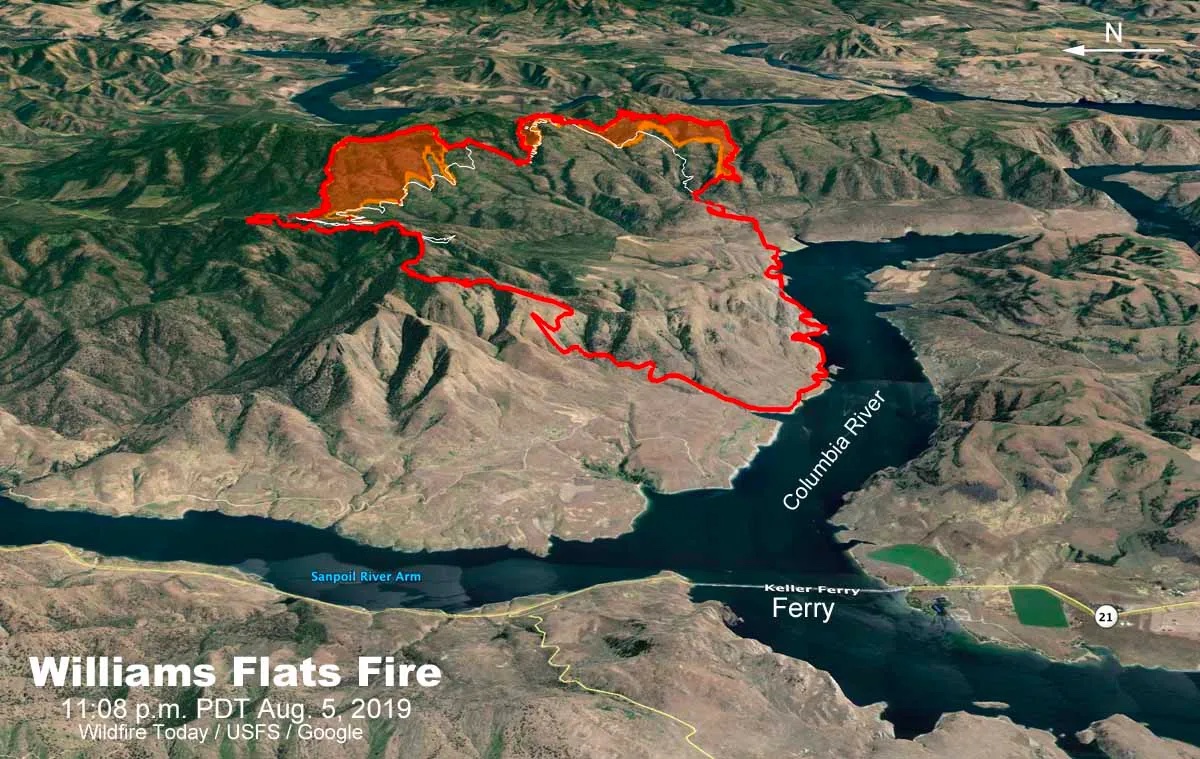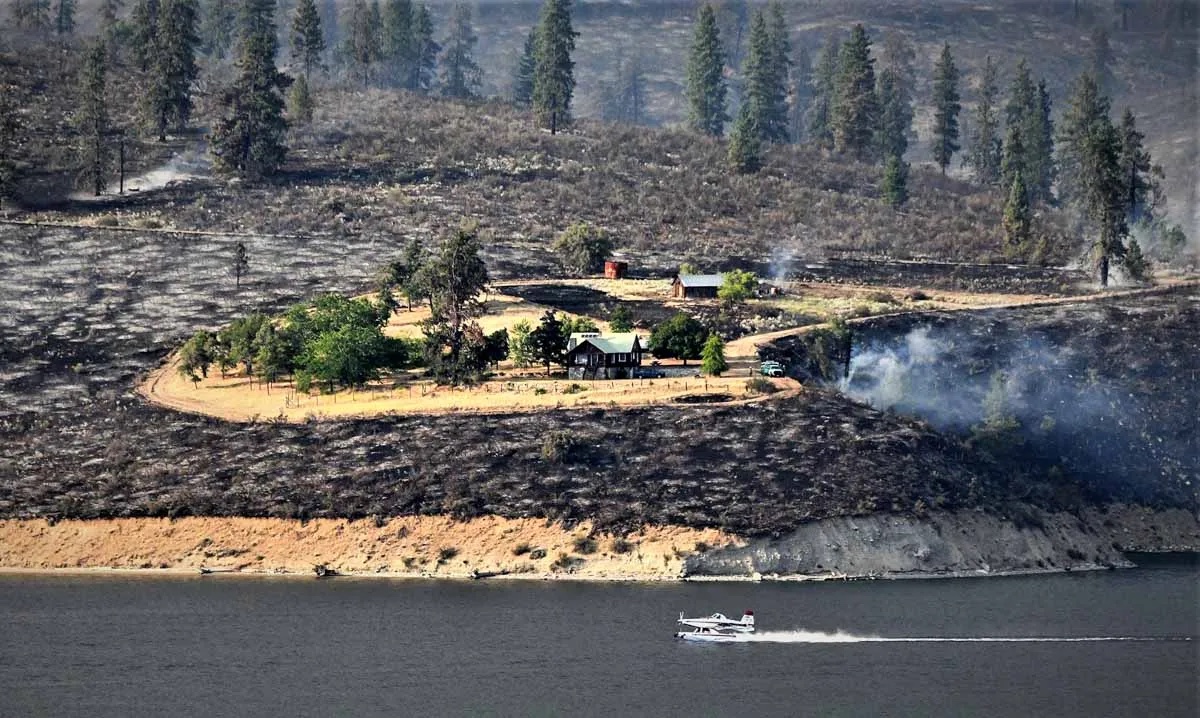Brief Chronology:
- Ignited by lightning on 2 Aug 2019.
- 8,200 (= 3,318 ha) acres burned by 3 Aug.
- 13,497 (=5,462 ha) acres by 4 Aug.
- 16,781 (=6,791 ha) acres by 6 Aug.
- "Red Flag" warning issued on 8 Aug, which means hot, dry, windy weather increased the fire-danger risk.
- 34,000 acres (=13,760 ha) by 8 Aug.
- 44,446 acres (=17,987 ha) burned in total.
- 100% contained (under control) by 25 Aug 2019.
|
 |
Fire Facts:
- Located in eastern Washington state at the "Colville Indian Reservation"
- 17,987 ha (= 44,446 acres) burned.
- Weather: High pressure / anticyclone.
- Wind issues during daytime, with active burning at night too.
- Pyrocumulus observed.
- Heavily studied, including flights by research aircraft as part of FIREX-AQ field program.
- "Level 3 (evacuate now)" orders by the Colville Tribes Emergency Services.
- Responding were: 22 hand crews, 8 helicopters, 18 fire engines, 9 dozers, 22 water tenders, 764 total personnel
|
 |

